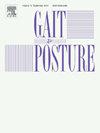Postural control imbalance in individuals with a minor lower extremity amputation: A scoping review
IF 2.4
3区 医学
Q3 NEUROSCIENCES
引用次数: 0
Abstract
Background
Minor lower extremity amputations (LEA) compromise postural control and increase the risk of falls. This issue is exacerbated by conditions such as diabetes, which affect proprioception and sensorimotor mechanisms. While orthopedic devices, including prostheses and orthoses, are frequently prescribed, their specific role in restoring postural control remains underexplored. This scoping review aimed to synthesize current research on postural control in individuals with a minor LEA and to evaluate the interventions that may improve balance.
Methods
A systematic search was conducted across databases (MEDLINE, CINAHL, SPORTDiscus, Cochrane) and grey literature, targeting studies employing biomechanics (e.g., kinetics, kinematics), functional tests (e.g., Functional Reach Test, Timed Up and Go) and self-reported assessments of balance confidence, fall risk, and physical performance.
Results
Fifteen articles involving 288 individuals with various levels of minor LEA were included. Increased risk of falling were evidenced by lower scores on functional balance tests, with postural deficits confirmed by biomechanical measurements in both static and dynamic conditions. Custom orthotic devices improved functional performance and biomechanical outcomes, suggesting their effectiveness in restoring balance. Prosthetic devices, such as custom prosthetic shoes, enhanced postural stability and facilitated smoother weight transitions during tasks. However, small sample sizes and inconsistent evaluation protocols, complicate understanding of their effectiveness in rehabilitation.
Conclusion
This scoping review highlights the underestimated postural challenges experienced by individuals with a minor LEA and supports the role of orthotic and prosthetic interventions in restoring balance. High-quality research to guide clinical decision-making in this population is needed.
下肢轻微截肢患者的姿势控制不平衡:范围综述
背景:轻微下肢截肢(LEA)损害姿势控制,增加跌倒的风险。糖尿病等疾病会影响本体感觉和感觉运动机制,从而加剧了这一问题。虽然骨科设备,包括假体和矫形器,经常被规定,但它们在恢复姿势控制方面的具体作用仍未得到充分探讨。本综述旨在综合目前对轻度LEA患者姿势控制的研究,并评估可能改善平衡的干预措施。方法系统检索数据库(MEDLINE、CINAHL、SPORTDiscus、Cochrane)和灰色文献,针对采用生物力学(如动力学、运动学)、功能测试(如功能伸展测试、Timed Up and Go)和自我报告的平衡信心、跌倒风险和身体表现评估的研究。结果共纳入文献15篇,288例轻度LEA患者。功能平衡测试得分较低证明了跌倒风险增加,静态和动态条件下的生物力学测量证实了姿势缺陷。定制矫形器改善了功能表现和生物力学结果,表明其在恢复平衡方面的有效性。假体设备,如定制假体鞋,增强了姿势稳定性,并促进了任务期间更平稳的体重转换。然而,小样本量和不一致的评估方案,使其在康复中的有效性的理解复杂化。结论:本综述强调了轻微LEA患者所经历的被低估的姿势挑战,并支持矫形器和假体干预在恢复平衡中的作用。需要高质量的研究来指导这一人群的临床决策。
本文章由计算机程序翻译,如有差异,请以英文原文为准。
求助全文
约1分钟内获得全文
求助全文
来源期刊

Gait & posture
医学-神经科学
CiteScore
4.70
自引率
12.50%
发文量
616
审稿时长
6 months
期刊介绍:
Gait & Posture is a vehicle for the publication of up-to-date basic and clinical research on all aspects of locomotion and balance.
The topics covered include: Techniques for the measurement of gait and posture, and the standardization of results presentation; Studies of normal and pathological gait; Treatment of gait and postural abnormalities; Biomechanical and theoretical approaches to gait and posture; Mathematical models of joint and muscle mechanics; Neurological and musculoskeletal function in gait and posture; The evolution of upright posture and bipedal locomotion; Adaptations of carrying loads, walking on uneven surfaces, climbing stairs etc; spinal biomechanics only if they are directly related to gait and/or posture and are of general interest to our readers; The effect of aging and development on gait and posture; Psychological and cultural aspects of gait; Patient education.
 求助内容:
求助内容: 应助结果提醒方式:
应助结果提醒方式:


